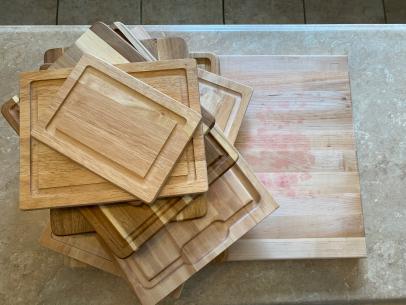In the bustling world of the kitchen, organization is key to efficiency and safety. One often overlooked but incredibly valuable tool in this quest for culinary mastery is the humble coloured chopping board. These vibrant kitchen essentials serve a purpose beyond aesthetics, contributing to a well-organized and hygienic workspace. In this blog post, we’ll explore the world of coloured chopping boards, their uses, and how they can elevate your cooking experience.
Colour Coding for Safety
One of the primary reasons behind the diverse spectrum of coloured chopping boards is safety. Assigning specific colours to different food groups helps prevent cross-contamination, ensuring the health and well-being of those enjoying your culinary creations.
Red: Raw Meat – Using a red chopping board exclusively for raw meat prevents the transfer of harmful bacteria to other foods.
Blue: Seafood – Seafood has its own designated board to avoid cross-contamination with other proteins.
Green: Vegetables and Fruits – Green boards are perfect for chopping fresh produce, promoting a healthy and colourful diet.
Yellow: Poultry – Yellow boards are dedicated to poultry, maintaining a separation from other meats.
Hygiene at Its Best
Coloured chopping boards not only contribute to food safety but also simplify the cleaning process. With a designated board for each food group, you can easily prevent the mixing of flavours and odours. This makes cleanup a breeze, saving you time and ensuring your ingredients taste as intended.
Efficiency in the Kitchen
Imagine the ease of meal preparation when each chopping board has its own designated purpose. Coloured chopping boards promote an organised workflow, allowing you to focus on creating culinary masterpieces without the worry of cross-contamination.
Aesthetics and Inspiration
Beyond their functional benefits, coloured chopping boards can add a touch of vibrancy to your kitchen. The visual appeal of a well-organized and colour-coordinated workspace can inspire creativity and make cooking an even more enjoyable experience.
Choosing the Right Material
When selecting round chopping boards, consider the material as well. Wooden boards are classic and provide a natural feel, while plastic boards are durable, lightweight, and easy to clean. Each material has its own advantages, so choose based on your preferences and cooking habits.
Maintenance Tips
To prolong the life of your coloured chopping boards, follow proper maintenance practices. Regularly sanitize them, avoid using harsh chemicals, and consider investing in separate boards for specific ingredients if you have a high volume of meal preparation.
Conclusion
In the culinary world, the smallest details can make a significant difference. Coloured chopping boards may seem like a minor addition to your kitchen, but their impact on safety, efficiency, and aesthetics cannot be overstated. Embrace the organized and hygienic advantages of colour-coded chopping boards, and let them be your reliable companions in the journey to becoming a kitchen maestro.

